April 2, 2019
Prelims Pointers
April 2, 2019
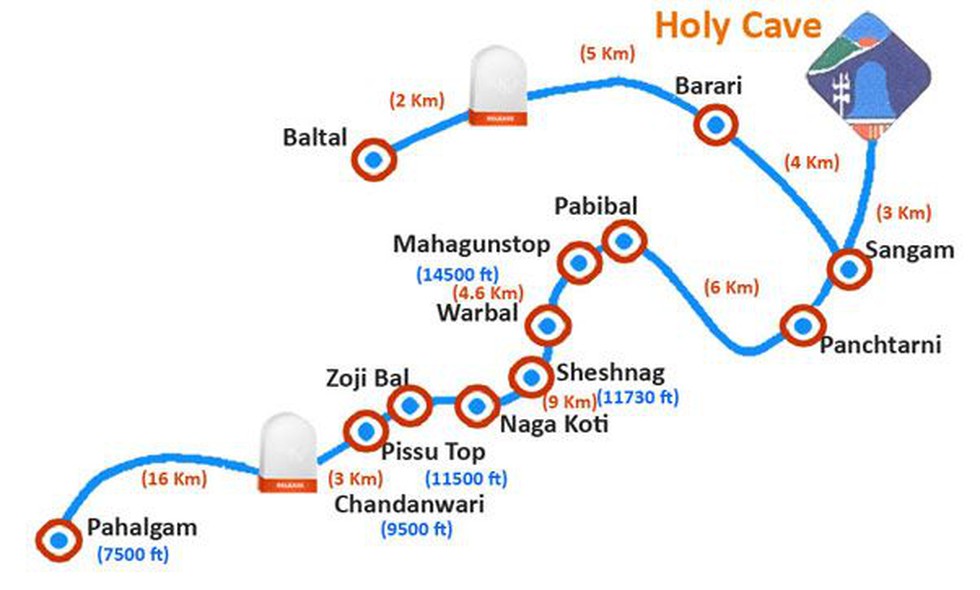
About:
- Amarnath cave is considered to be one of the holiest shrines in Hinduism.
- Location: The cave is situated at an altitude of 3,888 m about 141 km from Srinagar in Jammu and Kashmir.
- Shiva Linga: Inside the Amarnath cave, a stalagmite is formed due to freezing of water drops that fall from the roof of the cave on to the floor and grows up vertically from the cave floor. It is considered to be a Shiva Linga by Hindus.
- Religious Significance: According to a Hindu religious beliefs –
- This is the place where Shiva explained the secret of life and eternity to his divine consort, Parvati.
- The Amarnath temple is one of 18 Maha Shakti Peethas, that commemorate the location of fallen body parts of the Hindu deity Sati.
- This is the place where Shiva explained the secret of life and eternity to his divine consort, Parvati.
- Amarnath yatra: The cave can be reached only on foot or by pony, travelling 46 km from Pahalgam or 16 km from Baltal along a steep, winding mountain trail. The 46 day long annual yatra is scheduled to commence from the 1st of July and will continue till the 15th of August.
AMARNATHJI SHRINE BOARD?
The Shrine is managed by Shri Amarnathji Shrine Board (SASB), that was constituted by an Act of the Jammu & Kashmir State Legislature in 2000 with the Governor of Jammu and Kashmir as its ex-officio Chairman.
Prelims Pointers
April 2, 2019
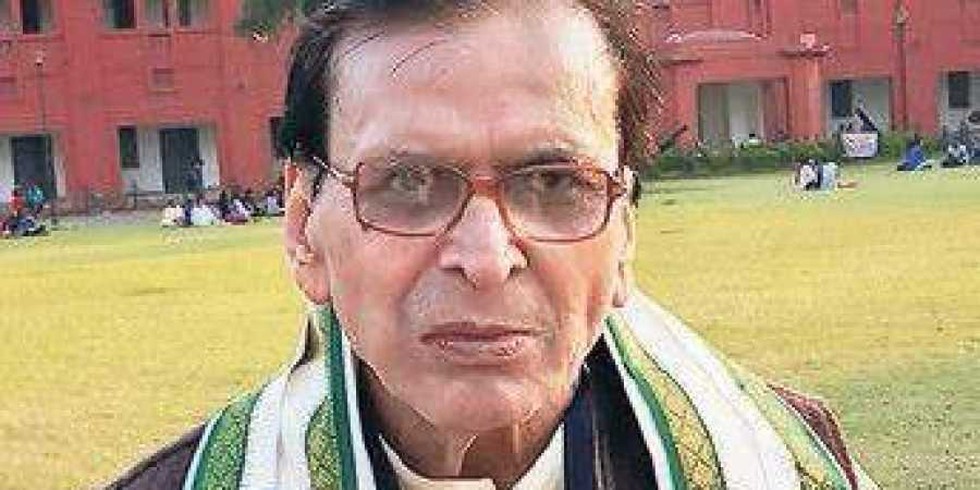
About:
- He had penned over 100 plays and directed over 500 plays. He introduced pioneering innovations in Odia drama as far as direction, script and stagecraft is concerned.
- Rath single-handedly organised one of the biggest theatre festivals in the world - India Theatre Olympiad - in Cuttack for the last two decades. The Olympiad came to become a prestigious feature in the world amateur theatre calendar.
- To popularise Odia theatre in the country, he formed Utkal Yuva Sanskrutika Sangh in Cuttack which took part in theatre fests across the country.
- He was a recipient of prestigious awards like Kendriya Sangeet Natak Akademi Award, Odisha Sangeet Natak Akademi Award and Odisha Sahitya Akademi Award.
Prelims Pointers
April 2, 2019

Terminology:
- Coronary Artery Disease (CAD) happens when a waxy substance called plaque builds up on the inner walls of coronary arteries. This causes arteries to harden and narrow, decreasing blood flow to heart.
- Coronary stents are small, wire, mesh tubes that help widen a clogged artery and restore adequate blood flow to the heart.
Working:
- During the procedure, cardiologist places the stent over a thin, long tube with a balloon tip called a catheter and insert it into an artery in groin or arm.
- Once the stent reaches the clogged artery, doctor will inflate the balloon to expand the stent.
- When the stent reaches the desired size to widen the clogged artery, doctor will deflate and remove the balloon.
- The stent will stay in place permanently to help prop open the artery and decrease its chance of narrowing again.
- Over time, the inner lining of the artery grows over the surface of the stent, making it a permanent part of artery.
Types of Coronary Stents?
- Bare-Metal Stents: These are tiny wire mesh tubes that help widen a clogged artery, but are not coated with a polymer or drugs to help prevent re-blockage of the artery. This type of stent may be used in patients who are allergic to either the polymer or drugs used in drug-eluting stents.
- Drug-Eluting Stents: It is a bare-metal stent that has been coated with a polymer that gradually releases a drug over the time when re-blockage is most likely to happen. This helps reduce the chance of the artery becoming blocked again.
Prelims Pointers
April 2, 2019

Bharat stage emission standards:
- What are they? These are emission standards instituted by the Government of India based on European regulations.
- Objective: To regulate the output of air pollutants from internal combustion engine equipment. The higher the fuel standard a vehicle complies with, the less polluting it is.
- Who sets them? The standards and the timeline for implementation are set by the Central Pollution Control Board under the Ministry of Environment & Forests and Climate Change.
Difference Between BS-IV AND BS-VI?
- Sulphur content: The main difference is in the amount of sulphur in the fuel which is reduced from 50 ppm in BS IV fuel to 10 ppm in BS VI fuel for both gasoline and diesel.
- NOx emissions:
- BS VI norms will address one of the inherent flaws in the European emission standards which permits diesel cars to emit more particulate matter and nitrogen oxide.
- NOx emissions from diesel cars are expected to come down by nearly 70% and, from cars with petrol engines, by 25%.
- BS VI norms will address one of the inherent flaws in the European emission standards which permits diesel cars to emit more particulate matter and nitrogen oxide.
Timeline of Bharat stage VI fuel in India?
- 2015: India decided to leapfrog to Bharat stage-VI emission norm compliant petrol and diesel from April 2020, from the Bharat stage-IV grade at present.
- April 2018: Delhi became the first city in the country to shift from Bharat stage-IV grade petrol and diesel to Bharat stage-VI fuels.
- April 1, 2019: Cities in the 12 contiguous districts of Rajasthan and Uttar Pradesh as well as the city of Agra switched over to the Bharat stage-IV.
- 2020: Rest of the country will follow suit from April 2020.
Prelims Pointers
April 2, 2019

Salient Features of AFSPA:
- It is a law which gives armed forces (Army, the Air Force and Central paramilitary forces) the special powers and immunity to maintain public order in “disturbed areas”.
- When is it applied? It can be applied only after an area has been declared “disturbed” under section 2 of the act.
- What is a Disturbed area? An area can be considered to be disturbed due to differences or disputes among different religious, racial, language or regional groups or castes or communities.
- Who declares an area as disturbed? Section (3) of AFSPA empowers the governor of the state/Union territory to issue an official notification declaring the state or a region within as a “disturbed area”, after which the centre can decide whether to send in armed forces.
- The ‘special powers’ of armed forces under Section 4 are:
- ‘Power to use force, including open fire’ at an individual if he violates laws which prohibit (a) the assembly of five or more persons; or (b) carrying of weapons.
- ‘power to arrest’ without a warrant; (Under section 5 the Armed Forces have to hand over the arrested person to the nearest Police Station “with the least possible delay”.
- ‘power to seize and search’ without any warrant any premise.
- ‘Power to use force, including open fire’ at an individual if he violates laws which prohibit (a) the assembly of five or more persons; or (b) carrying of weapons.
- These armed forces are immune from prosecution unless Union Government provides sanction to the prosecuting agencies.
Prelims Pointers
April 2, 2019

About:
- Chairperson: The tribunal will be headed by Justice Chander Shekhar of the Delhi High Court.
- Under which act? The decision to constitute a tribunal has been taken by the Ministry exercising the powers conferred under the Unlawful Activities (Prevention) Act.
- Background: Both the organisations – the Jamaat-e-Islami Jammu and Kashmir (JeL) and the Jammu and Kashmir Liberation Front-Yasin Malik (JKLF-Y) faction – were declared as unlawful associations by the centre.
Prelims Pointers
April 2, 2019

About:
- Meaning: SRO is an organization representing a particular segment of entities, which, as a first level regulator, regulates the members of that segment.
- Role: A SRO for a segment of intermediaries in the securities market would be entrusted with the role of being the first level regulator for such intermediaries, who are its members.
- Importance: Globally it is observed that SROs have played an important role in the development of the securities market in several jurisdictions and effectively assisted the regulator in discharging its regulatory duties.
- SRO regulations in 2004: SEBI had notified the SRO regulations in 2004. As on date, the said regulations are in force only in relation to distributors engaged by Asset management companies of mutual funds and distributors engaged by portfolio managers.
SRO for Investment Advisers:
- Section 11(2)(b) of SEBI Act empowers SEBI to register and regulate the working of Investment Advisers. In this background, SEBI (Investment Advisers) Regulations, 2013 (IA Regulations) came into effect in 2013.
- As on March 19, 2019, a total of 1136 investment advisers are registered with
- Since the last five years, the number of registered investment advisers has shown an increase, particularly individuals, and there has been a corresponding increase in number of complaints against them.
- In this background, The SEBI has proposed a self-regulatory organisation (SRO) for the growing number of investment advisers.
Prelims Pointers
April 2, 2019

About:
- Emperor Akihito is stepping down on April 30, in the first abdication in 200 years, bringing his era of “Heisei” to an end. The new era “Reiwa” takes effect May 1.
- Prime Minister Shinzo Abe said the term “Reiwa” came from the “Manyoshu”, an anthology of Japanese poems dating back 1,200 years that “symbolises nation’s profound public culture and long tradition”.
- It is believed to be the first time the era name, or “gengo” has been taken from a Japanese document, a break from more than 1,300 years of using Chinese classics.
- While a growing number of Japanese prefer the Western calendar over the Japanese system in a highly digitalized and globalized society, the era name is still widely used in government and business documents. Elders often use it to identify their generations.
Japan’s political system?
- The politics of Japan has a parliamentary representative democratic constitutional monarchy whereby the Emperor is the ceremonial head of state and the Prime Minister is the head of government and the head of the Cabinet, which directs the executive branch.
- The emperor has no political power under Japan’s postwar constitution.
Prelims Pointers
April 2, 2019

About:
- Background: The quinquennial (every five years) Livestock Census has been conducted in the country periodically since 1919-20. So far 19 such census have been conducted. The 20th livestock census is being conducted from 1st October, 2018.
- Regions Covered: All districts of all the States and Union Territories in the country are participating in it. The enumeration will be done in all villages and urban wards.
- Species covered: Various species of animals (Cattle, Buffalo, Mithun, Yak, Sheep, Goat, Pig, Horse, Pony, Mule, Donkey Camel, Dog, Rabbit and Elephant)/poultry birds (Fowl, Duck, Emu, Turkeys, Quail and other poultry birds) possessed by the households, household enterprises/non-household enterprises and institutions will be counted at their site.
- Focus on specific breeds:
- The 20th Livestock Census would be a breed-wise Livestock Census which will be helpful for framing policies or programmes for breed improvement.
- The breeds of various major species including poultry as registered by National Bureau of Animal Genetic Resources (NBAGR) will be covered in the Livestock Census.
- The 20th Livestock Census would be a breed-wise Livestock Census which will be helpful for framing policies or programmes for breed improvement.
- Institutions involved:
- The human headcount is conducted every 10 years by the Registrar General of India through a network of permanent offices known as the Directorate of Census in each state.
- On the other hand, feeder livestock is counted by no permanent administrative institution, a process that, therefore, lacks bare resources.
- The human headcount is conducted every 10 years by the Registrar General of India through a network of permanent offices known as the Directorate of Census in each state.
While India has the world’s second largest human population at 121 crore (according to census 2011), it leads the world in livestock population at 125.5 crore.
Prelims Pointers
April 2, 2019

About:
- Features:
- The digital morphing wing is a radical kind of airplane wing that can change shape to control the plane’s flight by automatically responding to changes in the wing’s aerodynamic loading conditions.
- The wing is made deformable by incorporating a mix of stiff and flexible components in its structure. These tiny sub-assemblies are bolted together to form an open, lightweight lattice framework.
- The digital morphing wing is a radical kind of airplane wing that can change shape to control the plane’s flight by automatically responding to changes in the wing’s aerodynamic loading conditions.
- Difference with conventional wings:
- Conventional wings require separate movable surfaces to control the roll and pitch of the plane.
- The new assembly system, on the other hand, makes it possible to deform the whole wing, or parts of it. This could provide a much better approximation than a conventional wing of the best configuration for each stage.
- Conventional wings require separate movable surfaces to control the roll and pitch of the plane.
- Significance: The wing is much lighter, and thus much more energy-efficient, than those with conventional designs. The new approach to wing construction could afford greater flexibility in the design and manufacturing of future aircraft.
April 1, 2019
Prelims Pointers
April 1, 2019

About:
- Background:
- The Electricity Act, 2003 and the National Action Plan on Climate Change (NAPCC) provide for a roadmap for increasing the share of renewable in the country.
- Central Electricity Regulatory Commission (CERC) notified Regulation on Renewable Energy Certificate (REC) in January, 2010.
- REC Mechanism, a market based instrument, has been introduced in India in November 2010.
- The Electricity Act, 2003 and the National Action Plan on Climate Change (NAPCC) provide for a roadmap for increasing the share of renewable in the country.
- Meaning: The REC mechanism is a market based instrument to promote renewable sources of energy and development of market in electricity.
- Working:
- It provides an alternative voluntary route to a generator to sell his electricity from renewable sources just like conventional electricity and offer the green attribute (RECs) separately to obligated entities to fulfill their renewable purchase obligation (RPO).
- Under the RPO, bulk purchasers like discoms, open access consumers and capacitive users are required to buy certain proportion of renewable energy or RECs.
- They can buy RECs from renewable energy producers to meet the RPO norms.
- It provides an alternative voluntary route to a generator to sell his electricity from renewable sources just like conventional electricity and offer the green attribute (RECs) separately to obligated entities to fulfill their renewable purchase obligation (RPO).
- Trading:
- Indian Energy Exchange (IEX) and Power Exchange of India (PXIL) are the two power bourses in the country, which are engaged in trading of RECs and electricity.
- The trading of renewable energy certificates (RECs) is conducted on the last Wednesday of every month.
- Indian Energy Exchange (IEX) and Power Exchange of India (PXIL) are the two power bourses in the country, which are engaged in trading of RECs and electricity.
Prelims Pointers
April 1, 2019
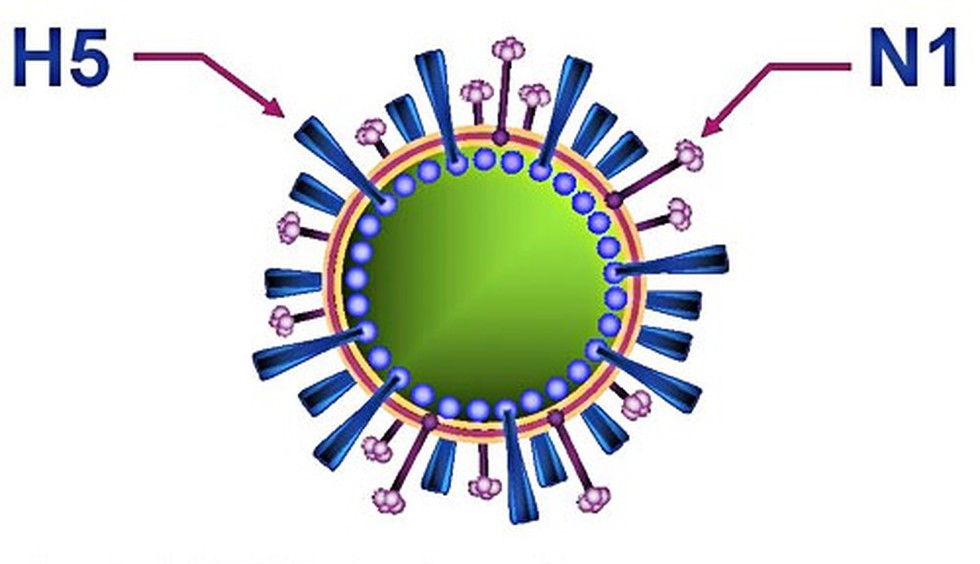
About:
- What is H5N1? H5N1, is a subtype of the influenza A virus that causes a highly infectious, severe respiratory disease in birds called avian influenza (or "bird flu"). Human cases of H5N1 avian influenza occur occasionally.
- How does H5N1 influenza spread to people?
- Almost all cases of H5N1 infection in people have been associated with close contact with infected live or dead birds.
- it is very difficult to transmit the infection from person to person.
- According to WHO, there is no evidence that the disease can be spread to people through properly prepared and thoroughly cooked food. It is because the virus is sensitive to heat. Normal temperatures used for cooking will kill the virus.
- Almost all cases of H5N1 infection in people have been associated with close contact with infected live or dead birds.
- Impact: Apart from economic consequences, H5N1 infection in humans can cause severe disease and has a high mortality rate. When people do become infected, the mortality rate is about 60%.
- Symptoms of H5N1 avian influenza in humans: Fever (often high fever, > 38°C) and malaise, cough, sore throat, and muscle aches. Other early symptoms may include abdominal pain, chest pain and diarrhoea.
- Treatment: The antiviral medicine Oseltamivir / Tamiflu can reduce the severity of illness and prevent death, and should be used in all cases.
Influenza Type A?
- Influenza type A is responsible for most cases of epidemic influenza. Influenza A viruses has been further divided in to subtypes and strains.
- Subtypes of Influenza A viruses:
- Influenza A viruses are divided into subtypes based on two proteins on the surface of the virus: the hemagglutinin (H) and the neuraminidase (N).
- There are 18 different hemagglutinin subtypes (H1 through H18) and 11 different neuraminidase (N1 through N11) subtypes.
- Strains of Influenza A viruses: Influenza A viruses can be further broken down into different strains. Some of the most virulent strains of influenza are –
- H5N1: Avian (bird) flu.
- H1N1: originally referred as Swine flu.
Prelims Pointers
April 1, 2019

About:
- Permanent Account Number (PAN):
- It is a 10-digit alphanumeric identity number, issued under section 139A of Income-tax Act, 1961, by the income tax department.
- It enables the department to identify all the transactions of a tax assessee, such as: tax payment, tax returns, and specified transaction where PAN has to be quoted.
- It is essential for every individual to have a PAN, if the income earned during the year is taxable.
- It is a 10-digit alphanumeric identity number, issued under section 139A of Income-tax Act, 1961, by the income tax department.
- Tax Deduction and Collection Account Number (TAN):
- Similar to PAN, TAN is also a 10-digit alpha numeric identity issued by income tax department.
- However, only those who are responsible for deducting or collecting tax need to get a TAN.
- For instance, an employer who needs to deduct tax at source from employees’ income under section 192 of the Act, needs to have a TAN. Under section 203A of the Act, it is mandatory to quote TAN on all tax deducted at source (TDS) returns.
- Similar to PAN, TAN is also a 10-digit alpha numeric identity issued by income tax department.
Prelims Pointers
April 1, 2019
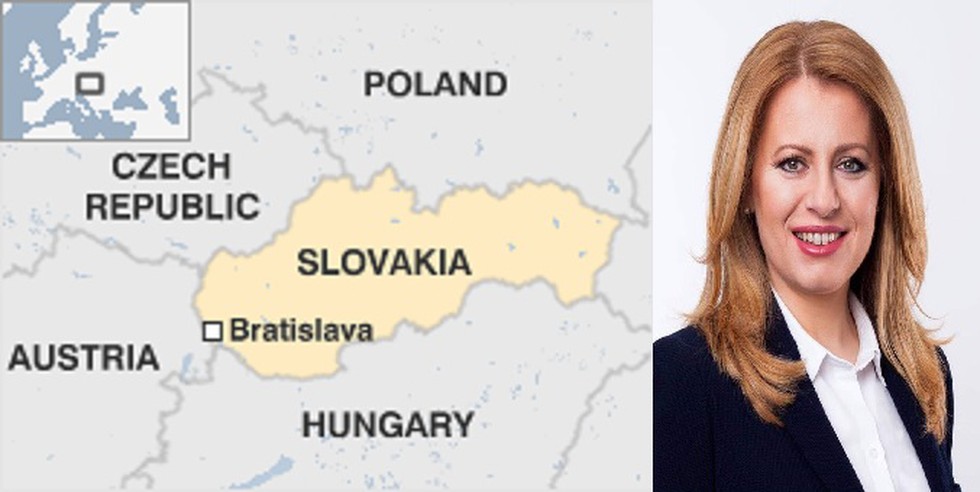
About:
- The election of Zuzana Caputova, the 45-year-old environmental lawyer, as Slovakia’s first woman President was greeted as a vote for change.
- The recent election follows the murder of an investigative journalist last year. The anti-graft activist are hoping that it will provide a check on a government tarnished after last year’s murder of a journalist.
Slovakia?
- Location: Slovakia is a landlocked country in Central Europe. It is bordered by Poland, Ukraine, Hungary, Austria, and the Czech Republic to the northwest.
- Capital and largest city: Bratislava.
- It is a member of the European Union and Eurozone.
Prelims Pointers
April 1, 2019
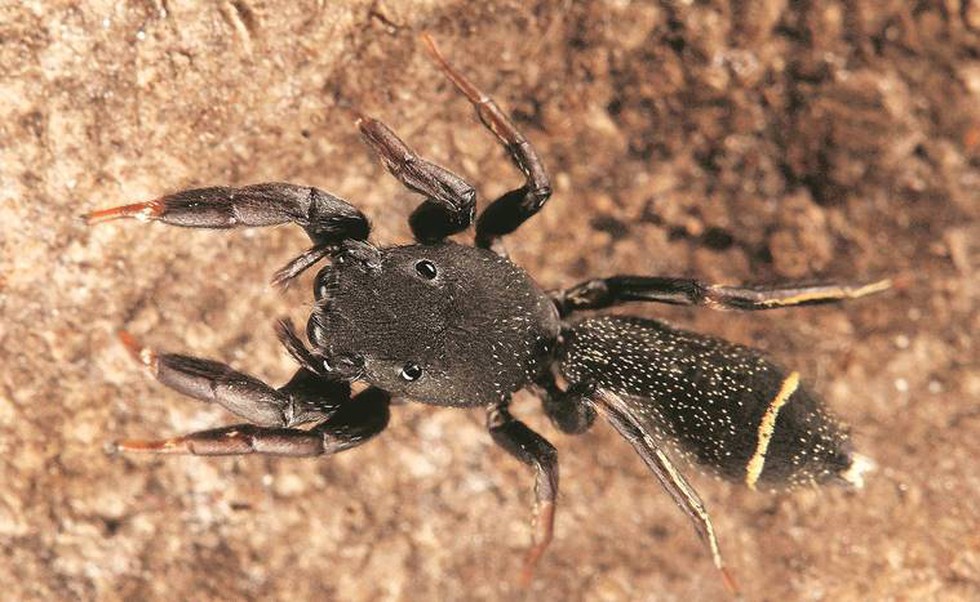
About:
- Jumping spider family:
- It is the most diverse spider family, consisting of 6,126 described species. In India, there are about 256 species of jumping spiders known till date.
- They can be easily recognised by their lager anterior median eyes. They are described as diurnal hunters (hunting during the day) and possess brilliant vision and swift reflexes.
- It is the most diverse spider family, consisting of 6,126 described species. In India, there are about 256 species of jumping spiders known till date.
- Records:
- Jerzego Sunillimaye spider is only the second species under the genus Jerzego from India.
- This is the first species under the genus whose taxonomic details, mating behaviour, and egg development have been documented.
- Jerzego Sunillimaye spider is only the second species under the genus Jerzego from India.
Sunil Limaye?
- The spider Jerzego sunillimaye is named after Sunil Limaye, additional principal chief conservator of forest (wildlife east), Maharashtra forest department who had been involved in the conservation of urban biodiversity in Mumbai.
- Limaye was also honoured in 2018, after the researcher named a nocturnal lizard — Limaye’s Day Gecko — after him.
Prelims Pointers
April 1, 2019

About:
- Also known as? Salt flat.
- What are they? Natural salt pans or salt flats are flat expanses of ground covered with salt and other minerals.
- Where are they found? They are found in deserts.
- Examples? Large salt plains are common in the Sahara Desert, the Kalahari Desert, the Rann of Kutch, the western United States and the central deserts of Australia.
- How are they formed? These are natural formations which are formed by evaporation of a water pool such as a lake or pond.
- This happens in climates where the rate of water evaporation exceeds the rate of precipitation.
- If the water cannot drain into the ground, it remains on the surface until it evaporates, leaving behind minerals precipitated from the salt ions dissolved in the water.
- This happens in climates where the rate of water evaporation exceeds the rate of precipitation.
- What is their appearance? Over thousands of years, the minerals (usually salts) accumulate on the surface. These minerals reflect the sun's rays (through radiation) and often appear as white areas.
- Ecological significance: Salt pans play a significant role in the ecology of the neighbouring areas. Salt pans have different species of birds and insects thriving on them. They have an enormous water-holding capacity that helps in flood control.
Mumbai's Wadala salt satyagraha?
During Gandhi’s salt satyagraha in 1930, many locations in Mumbai witnessed the civil disobedience movement, but the satyagraha at Wadala salt pan was the most prominent. Thousands of satyagrahis would gather at the Wadala salt pans and often face brutal lathi charge. On 6th April 1930, a group of women led by Kamaladevi Chattopadhyay, a noted freedom fighter, marched to Chowpatty and started making salt from sea water on makeshift stoves or chulhas.
Prelims Pointers
April 1, 2019

Key findings of the study:
- According to the analysis of NFHS-4 survey, the proportion of births delivered by cesarean delivery has increased especially fast during the last decade in India, reaching 17.2% in 2010 to 2016.
- Changes in lifestyles, commercial pressure, and cultural factors as some of the reasons for the rise.
- The 2% growth in C-sec rate is above the World Health Organization’s ‘ideal rate’. recommended for caesarean sections (which is between 10% and 15%).
- 40.9% of babies in private hospitals are born through C-sec as compared to 11.9% of those born in government hospitals.
- While China had 5.3 million cesarean births in 2008-2014, the cesarean rate is reportedly contracting. In coming years India will become home to the largest number of cesarean births.
C-section?
- C-section is a life-saving intervention for women and newborns when complications occur, such as bleeding, foetal distress, hypertensive disease, and babies in abnormal position.
- However, the surgery is not without risk for mother and child, and is associated with complications in future births.
- It is estimated that 10-15% of births medically require a C-section due to complications, suggesting that average C-section use should lie between these levels.
Prelims Pointers
April 1, 2019

About:
- The paper states there is a high probability that fungi and lichens may have colonized the Mars..
- The photographs were taken by NASA rover Curiosity.
- However, it has also been met with skepticism, and the paper itself concedes that the evidence is not proof.
Curiosity rover?
- Curiosity is a car-sized rover designed to explore Gale Crater on Mars as part of NASA's Mars Science Laboratory mission (MSL).
- Curiosity was launched from Cape Canaveral in 2011 and landed on mars in 2012. The rover is still operational.
Prelims Pointers
April 1, 2019
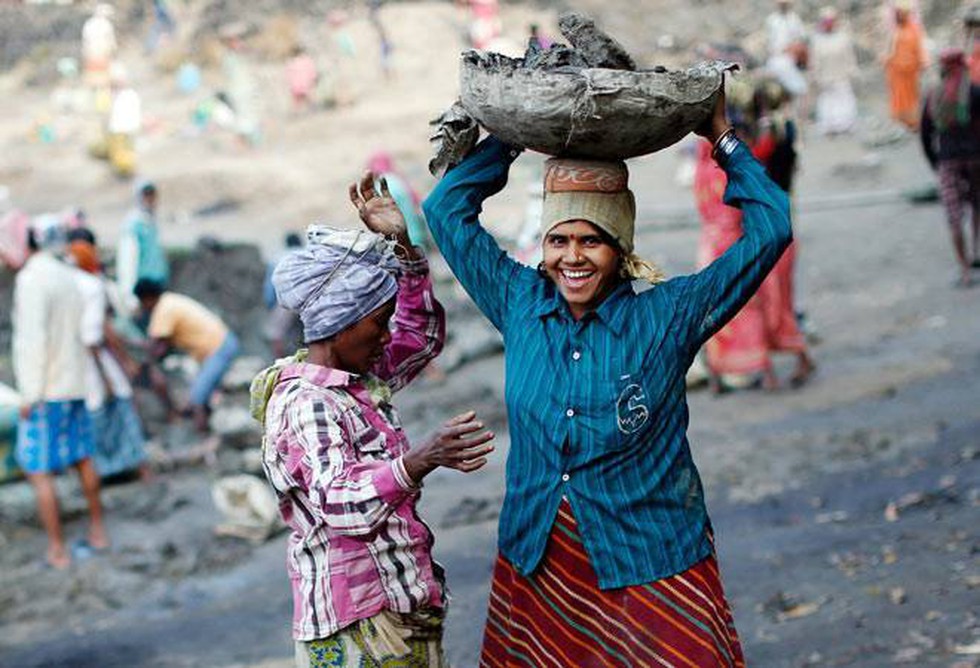
About:
- Baseline index: Wage rates for workers under the MGNREGA, 2005 are revised annually based on Consumer Price Index-Agricultural Labourers (CPI-AL) by the Central Government in accordance with the Section 6(1) of MGNREGA. The CPI-(AL) is published by Labour Bureau, Shimla.
- Effective date: The revised wage rates are made applicable from 1st April of the year.
- Output criteria: MGNREGA wages are paid based on measurement of work done i.e. piece rate basis. The actual wage payable is calculated based on the output of the worker.
- Wages vary from state to state: Every State has its defined Schedule of Rates on the basis of which the work output is defined and used to calculate the wages for MGNREGA beneficiaries.
Committee for appropriate index for revising MGNREGA wages?
- In January 2019, Union Minister of State for Rural Development informed Rajya Sabha that Committee under the chairpersonship of former Additional Secretary, Ministry of Rural Development was constituted to study the appropriate index for revising MGNREGA wages.
- Recommendations made:
- Use Consumer Price Index-Rural instead of the existing CPI-AL for revising MGNREGA wages every year.
- Use annual average instead of the existing practice of using December month index only.
- Present status: The recommendations of the Committee are under consideration in consultation with the Ministry of Finance.
Prelims Pointers
April 1, 2019

About:
- Launch vehicle: The satellites were carried off by ISRO's PSLV-C45 from its spaceport, Satish Dhawan Space Centre, Sriharikotta.
- EMISAT: EMISAT is capable of gathering information of strategic value, in electromagnetic spectrum. Its devices have been developed by Defence Research and Development Organization (DRDO).
- Foreign satellites: The foreign satellites include 24 from the US, two from Lithuania and one each from Spain and Switzerland.
- 20 of the US payloads are meant for earth observation, and are known as Flock-4A. Four other US payloads known as LEMUR are used for vessel automatic identification.
- Switzerland’s Astrocast-2 is involved in studies of the cutting edge Internet-of-Things technology.
- Aistechsat-3 of Spain is useful for remote asset management and aircraft tracking.
- They have all been launched under an agreement with the Antrix Corporation, the commercial arm of ISRO.
- 20 of the US payloads are meant for earth observation, and are known as Flock-4A. Four other US payloads known as LEMUR are used for vessel automatic identification.
- Multiple obits in the mission: The principal 'first-time' innovation this time is the multiple orbits involved in the mission. EMISAT and the 28 customer satellites have been ed into two different orbits, and later, the fourth stage engine of the rocket will be taken to a third orbit in space.
- QL configuration: In this mission, the rocket PSLV C45 flew in a new configuration called “QL.”
- In this configuration, the rocket is fitted with four longer versions of strap-on motors that provide the vehicle the required additional thrust.
- Earlier, the rocket used to be in “XL” version with six strap-on motors or two or with no strap-on motors known as core alone configuration.
- In this configuration, the rocket is fitted with four longer versions of strap-on motors that provide the vehicle the required additional thrust.

